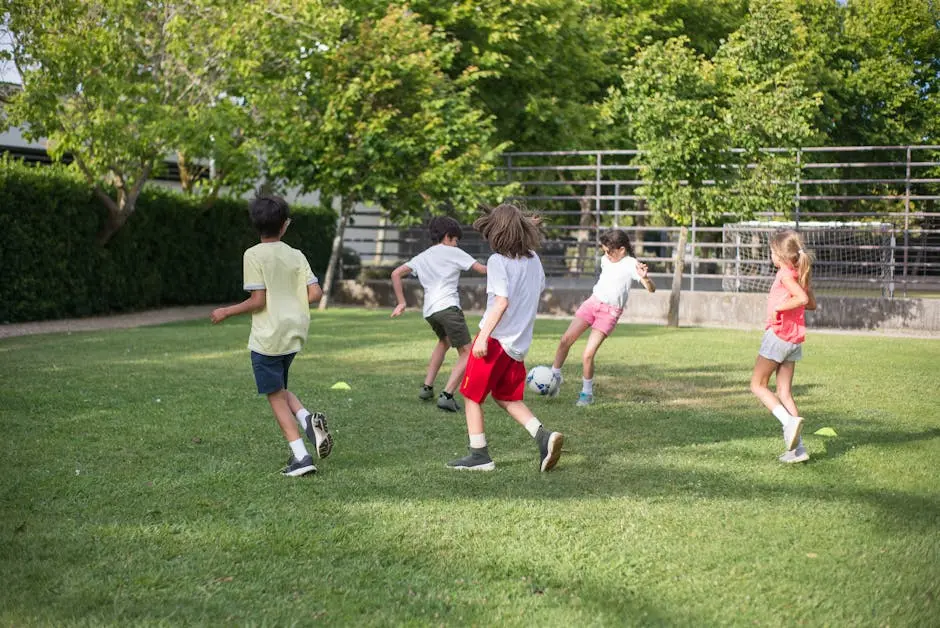In the world of youth sports, the size of the ball isn’t the only thing that matters. Sometimes, it’s the little balls that lead to big transformations, fostering skills, teamwork, and passion among young athletes. In this blog, we explore how these small but mighty elements play a significant role in shaping the future of youth sports.
The Role of Little Balls in Youth Sports
Little balls, from soccer balls to tennis balls, are essential in teaching the fundamentals of various sports. They provide a manageable size for young players to grasp and develop their skills without feeling overwhelmed.
The presence of little balls in youth sports transcends mere size. They’re gateways to foundational skills, giving beginners the chance to learn the core principles of the game. As children kick, throw, or hit these smaller items, they engage in an enriching process that promotes confidence and growth.
Also, these diminutive spheres encourage exploration. Young athletes can experiment with techniques and discover their unique style without the pressure associated with larger, more complex equipment. The playful nature inherent in using little balls allows for a deeper connection to the sport and builds a positive attitude towards physical activity.
Furthermore, little balls help mitigate the fear of failure. The more manageable size means that less experienced players can face challenges with a sense of accomplishment rather than intimidation. This boosts their self-esteem and motivates them to keep trying, creating a lifelong love for sports.
Encouraging Participation through Fun
The lightweight nature of little balls makes sports less intimidating and more accessible for children. They encourage kids to try new activities and instill a love for physical fitness from an early age. When kids see others having fun with these balls, they are more likely to join in, fostering a sense of camaraderie and excitement around sports.
Fun is the essence of youth sports, and little balls are the perfect catalysts for creating enjoyable experiences. Picture a group of children laughing and chasing after a brightly colored beach ball or a foam soccer ball. This joy fosters community, creates friendships, and reinforces the idea that sports can be an enjoyable part of life.
Moreover, little balls often inspire creative games that spark imagination. Kids can invent their own versions of sports, blending rules and creating new ways to play. Those spontaneous moments of creativity nurture a passion for movement, encouraging a future where sports remain a source of joy rather than obligation.
It’s essential to remember that the experience is equally important as the activity itself. By incorporating little balls into sports programs, coaches and parents can fundamentally shift how children perceive athleticism, making it a cherished part of their childhood memories.
Building Teamwork and Social Skills
Playing with little balls often requires teamwork and communication, fostering vital social skills in young athletes. These are essential both on and off the field. When children engage in activities involving little balls, they learn the importance of cooperation, patience, and mutual support.
The collaborative nature of team sports encourages children to work together towards a common goal. Whether they are passing a small soccer ball or strategizing a basketball play, the experience builds bonds that extend beyond the game. These social interactions foster friendships that can last a lifetime.
In addition, these interactions help kids develop emotional intelligence. By facing both victories and defeats together, they learn empathy and the importance of celebrating each other’s successes. Such experiences teach young athletes to navigate their emotions and understand those of their peers, a skill that will serve them well throughout life.
Moreover, when kids take turns and communicate while playing, they gain confidence in expressing themselves. This vocalization builds their verbal skills and helps them articulate their thoughts and feelings, laying a strong foundation for social interactions in other areas of their lives.
Little Balls and Skill Development
Smaller balls help in honing hand-eye coordination, reflexes, and motor skills, which are foundational elements for many sports. The challenges they present are great for skill development. For instance, a youth basketball program using smaller balls allows children to refine their shooting technique more effectively, since they can focus on accuracy and control.
These developmental benefits often go unnoticed at first glance. However, investing time with little balls allows young players to build essential skills incrementally. With consistent practice, they graduate to larger equipment, carrying with them a wealth of experience and confidence.
Interestingly, the variety in balls—from foam to lightweight rubber—also influences how kids respond to challenges. The difference in texture and bounce can lead to unique learning opportunities, allowing coaches to tailor their training methods to each child’s needs.
Ultimately, embracing the advantages of little balls paves the way for a richer sports education. Children will not only improve their physical capabilities but also learn the value of persistence, determination, and the joy of mastering a skill over time.
Creating Lifelong Athletes
Introducing children to sports with little balls sets the stage for lifelong engagement in physical activities. This foundation nurtures a desire to stay active and healthy throughout their lives. When children experience success and enjoyment early on, they are more likely to carry these habits into adulthood, creating a cycle of health and fitness that continues throughout their lives.
Moreover, little balls represent the joy of movement, encouraging parents and coaches to cultivate a positive environment. When children play freely with them, they associate sports with fun rather than pressure, fostering a sustainable relationship with physical health.
Equipping young athletes with a variety of experiences related to little balls helps develop their love for different sports. This not only keeps them engaged but also allows them to discover new interests. By exposing them to various activities, we open doors to new friendships and adventures for a lifetime.
Finally, the lessons learned through engagement with little balls extend far beyond the boundaries of sports fields. They teach resilience, teamwork, and commitment—attributes that prove invaluable in everyday life, including education and career pursuits. By nurturing the athletic spirit in children early on, we encourage the next generation of active, healthy citizens.
The Lasting Impact of Little Balls in Youth Sports
The impact of little balls extends far beyond the field. They teach children important life skills while promoting healthy habits. Embracing these small sports tools can lead to a more engaging and rewarding experience for young athletes. So, let’s keep rolling those little balls and watch how they transform youth sports.





